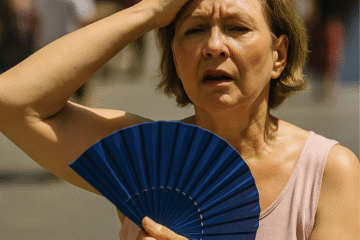The Art of Bathing: History, Travel, and Wellness
Bathing is an ancient ritual that goes beyond mere hygiene, intertwining elements of history, culture, and wellness. From the luxurious bathhouses of ancient Rome to the tranquil onsens of Japan, bathing has evolved into a significant cultural practice. This article explores the history of bathing, highlights captivating travel destinations renowned for their baths, and delves into the multifaceted benefits of this timeless ritual.
A Brief History of Bathing
Bathing has been a vital part of human civilization for thousands of years. The ancient Greeks and Romans turned bathing into an art form, constructing elaborate bathhouses that served as social and cultural hubs. The Roman thermae, for example, were architectural wonders equipped with heated floors, steam rooms, and expansive pools. These bathhouses were not just places to cleanse the body but also to socialize, exercise, and engage in intellectual discussions .
In Japan, the bathing culture, rooted in Shinto and Buddhist traditions, emphasizes purification and relaxation. The Japanese onsen (hot springs) and sento (public baths) have been central to Japanese life for centuries. Onsens, naturally heated by geothermal activity, are often in picturesque settings, offering a peaceful escape from daily life.
Travel Destinations Celebrated for Their Baths
- Budapest, Hungary: Often called the “City of Spas,” Budapest boasts a rich bathing culture with over a dozen thermal baths. The Széchenyi Thermal Bath, one of the largest spa complexes in Europe, is a must-visit. Its neo-baroque architecture and soothing thermal waters make it a perfect spot for relaxation.
- Iceland: The Blue Lagoon, located in a lava field near Reykjavik, is a world-famous geothermal spa. Its milky-blue waters, rich in minerals like silica and sulfur, are known for their healing properties. The surreal landscape and rejuvenating waters provide a unique bathing experience.
- Baden-Baden, Germany: Nestled at the edge of the Black Forest, Baden-Baden has been a spa town since Roman times. The Caracalla Spa offers modern wellness facilities, while the historic Friedrichsbad combines Roman and Irish bathing traditions in a luxurious 19th-century setting.
- Hakone, Japan: Located near Mount Fuji, Hakone is renowned for its hot springs and ryokan (traditional inns). The onsens in this region offer breathtaking views of the surrounding mountains and forests, making them an ideal destination for those seeking relaxation and natural beauty.
The Benefits of Bathing
Bathing is more than just a means to cleanse the body; it offers numerous physical, mental, and emotional benefits:
- Physical Health: Immersing in warm water can improve circulation, ease muscle tension, and alleviate joint pain. The minerals found in thermal waters, such as magnesium and calcium, can also benefit the skin and promote overall well-being.
- Mental Well-being: Bathing has been shown to reduce stress and anxiety. The calming effect of warm water can help lower cortisol levels, leading to a more relaxed state of mind. The ritualistic aspect of bathing can also provide a sense of routine and stability, enhancing mental clarity.
- Social Connection: Historically, bathhouses have been places of social interaction. Whether a communal onsen in Japan or a thermal bath in Budapest, these spaces encourage social bonding and community engagement.
- Cultural Appreciation: Traveling to destinations with rich bathing traditions allows a deeper appreciation of different cultures. Engaging in local bathing practices can offer insights into the people’s history, values, and lifestyles.
Bringing the Bathing Experience Home
For those who cannot make a trip to these exotic destinations, you can still enjoy the benefits of a luxurious bath at home. Here are some tips to recreate a spa-like experience in your own bathroom:
- Set the Scene: Transform your bathroom into a tranquil retreat. Dim the lights, light some candles, and play soothing music. Aromatherapy can enhance the experience—consider adding essential oils like lavender or eucalyptus to your bath.
- Use Bath Bombs and Bubbles: Bath bombs and bubble baths can elevate your bathing experience. They make your bath visually appealing and often contain beneficial ingredients like Epsom salts and moisturizing oils. Choose scents that you find relaxing and enjoyable.
- Incorporate Natural Ingredients: Enhance your bath with natural ingredients. Adding oatmeal can soothe irritated skin, while honey and milk can moisturize and soften your skin. Fresh herbs like rosemary or chamomile can provide additional therapeutic benefits.
- Practice Mindfulness: Turn your bath into a mindful experience. Focus on the sensations—the warmth of the water, the scent of the bath oils, the softness of the bubbles. Use this time to disconnect from technology and daily stressors, allowing yourself to fully relax .
- Post-Bath Rituals: After your bath, continue the relaxation with a post-bath ritual. Wrap yourself in a warm towel or robe, and apply a rich moisturizer to keep your skin hydrated. Enjoy a cup of herbal tea or a glass of water to rehydrate your body.
Conclusion
Bathing is a timeless ritual that connects us to our past, enriches our present, and promises wellness for the future. Whether you are soaking in the thermal baths of Budapest, relaxing in an Icelandic lagoon, experiencing the tranquility of a Japanese onsen, or enjoying a luxurious bath at home, the act of bathing offers a profound sense of rejuvenation and cultural connection. Embrace the art of bathing as a way to enhance your travel experiences and promote holistic well-being.




0 Comments